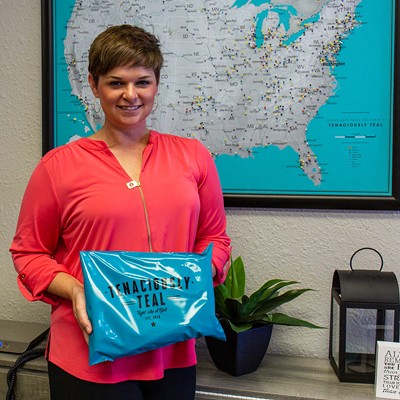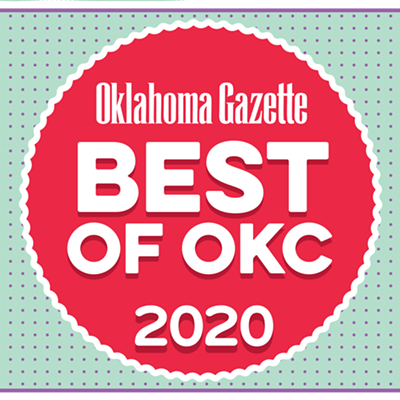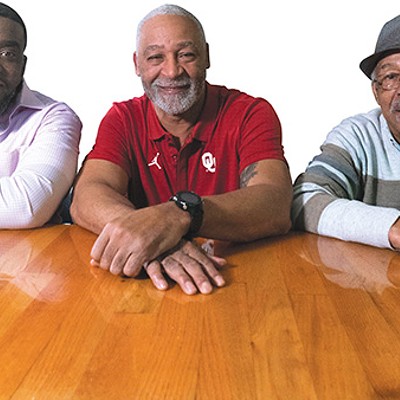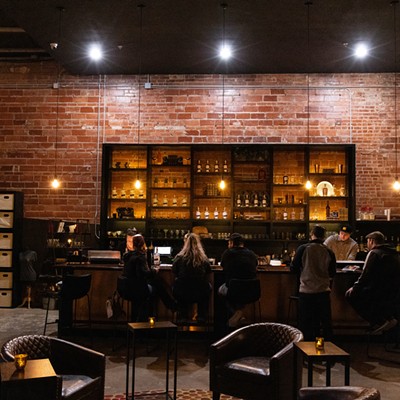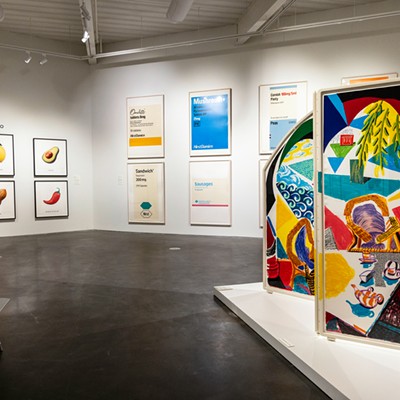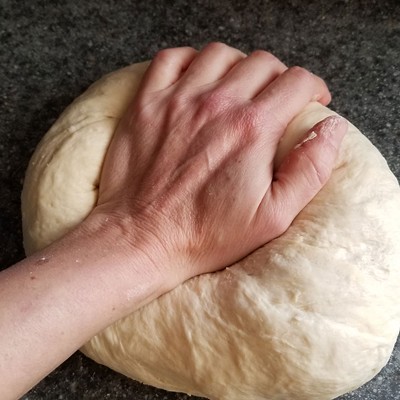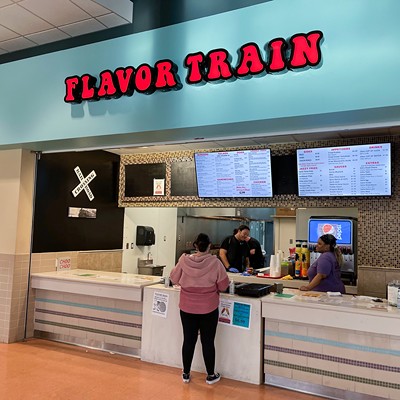Bartenders a bit more bold might instead reach for a whiskey to get a taste from which to build.
Some local bartenders are on the forefront of exploring the boundaries of whiskey, including James Etzler (pictured right) of The Office Drinks and Nosh, 5929 N. May. He’s concocted several drinks using different types of whiskeys, such as a tweaked version of the classic Sazerac. He has even infused a bottle of Pendleton whiskey with fresh cherries, which he recommends just drinking on the rocks in order to taste the tart smoothness the Canadian whiskey soaked up from the fruit.
“Whiskey can be just as flexible as vodka, but you have to know your ingredients and what you’re doing,” Etzler said. “Whiskey goes better with darker fruits or juices. You need something with a little more flavor to mix with. Your traditional drinks like (an) old fashioned or Manhattans use orange and cherry bitters. I like ginger ale with whiskey; it isn’t as sweet as coke and doesn’t hide the flavor.”
Mixology is so important to the bar there is a program every Tuesday night, starting at 7 p.m., called Flight 420. For $20, a customer can get a flight of four different cocktails showing off the unique qualities of a specific type of spirit or reworking traditional classics. A few weeks ago, Etzler did a flight of just whiskey cocktails.
“I used rye because it is lighter than a bourbon, and you can mix it well with things like lemon or mints,” he said. “But when I start mixing with heavier bourbons, I like to go with sweeter and more forward tastes, like cherries and different types of bitters.”
Ordering drinks from a skilled bartender and replicating from home are two separate things, however. To give amateur mixologists some help, City Arts Center, 3000 General Pershing Blvd., is hosting MISTology: The Science Behind the Cocktail tomorrow at 5:30 p.m.
Brewed up by the makers of Canadian Mist, the evening goes into the art and science behind mixology, as explained by Tim Laird and Steve Hughes, both mixologists with Canadian Mist. Although their brand will be well represented, the pair will go deeper into the process and show how whiskey can make for the best first ingredient when crafting a new cocktail.
“Starting with a vodka is like starting with a skinless, boneless, crustless chicken where I need a lot of spices to make it work,”
Laird said. “When I start with a whiskey, I am starting with flavor that I can build on.”
And
not all whiskeys are going to be mixed alike, Laird explained, with big
and bold bourbons and single-malt scotches having a dramatically
different flavor profile than sweeter, smoother Canadian whiskeys. Even
serving a drink cold versus warm can dramatically change the experience.
“We also weave in some scientific
discussions about density, functions of things like proteins,” Hughes
said. “I talk a little about the making of whiskey, yeast, distillation,
so we give the crowd a little bit of science of making whiskey, as well
as some of the science behind cocktails, like temperature and the
function of the ingredients.”
And,
at the end of the event, there is a tasting where classic cocktails
(like the margarita and the cosmopolitan) are reworked using whiskey to
show off the spirit’s flexibility, as well as prodding the attendees to
do a little homework.
“We
find people are intimidated to make cocktails at home, even though they
like to go out to bars and restaurants and order cocktails,” Laird
said. “We take that intimidation away by making it fun. One of the goals
is, when they leave, to encourage them to experiment at home. That way,
next time they are entertaining, they have these drinks they can serve
that they came up with on their own.”
Photo by Mark Hancock


